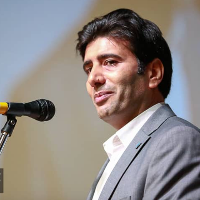Effects of model type on mirror neurons activity during a motor skill observation
The aim of the present study was to investigate the effect of self-modeling, skilled model and novice model on the activity of mirror neurons.
The current research was a semi-experimental study with an intergroup design. Twenty-one male students (mean age: 19.16 years) in three experimental conditions: 1. self-modeling, 2. skilled model observation, and 3. novice model observation attended in the study. The task of interest was a golf putting task. After providing pre-training considerations, instructions, and initial training in putting skill with emphasis on important stages and tips, the volunteers performed 10 golf putts and their performance was used for providing video tapes for display during recording of brain electrical waves. The second stage was to record the brain electrical waves by observing three types of models. In this recording, 10 10-second videos of golf putting were watched. The operation was repeated three times in the form of counterbalance: within-participant order; 1. by viewing their performance filmed in the previous stage, 2. by viewing skilled model performances (skilled golfer) and 3. by viewing novice model performances (beginning golfers in putting task). To measure the mu rhythm suppression, ratios of the mu rhythm power during the observed conditions relative to the power over the baseline condition at C3, C4 and CZ scalp locations were used.
Two-way within-subject analysis of variance (ANOVA) showed that the mu rhythm suppression was significantly different among experimental conditions. The results of paired comparisons also indicated that in, self-modeling, suppression of mu rhythm was significantly higher than the other two conditions.
Some of the findings indicate that due to the discrepancy between the ability to perform movement with the observed model execution, the activity of the mirror neurons was lower in the skilled and novice models. The cause of greater mirror neurons activity in self-modeling conditions was also discussed in terms of the Bandura’s cognidoi. org/10.30699/icss.21.2.132 tive-social theory and model-observer similarity.
- حق عضویت دریافتی صرف حمایت از نشریات عضو و نگهداری، تکمیل و توسعه مگیران میشود.
- پرداخت حق اشتراک و دانلود مقالات اجازه بازنشر آن در سایر رسانههای چاپی و دیجیتال را به کاربر نمیدهد.


